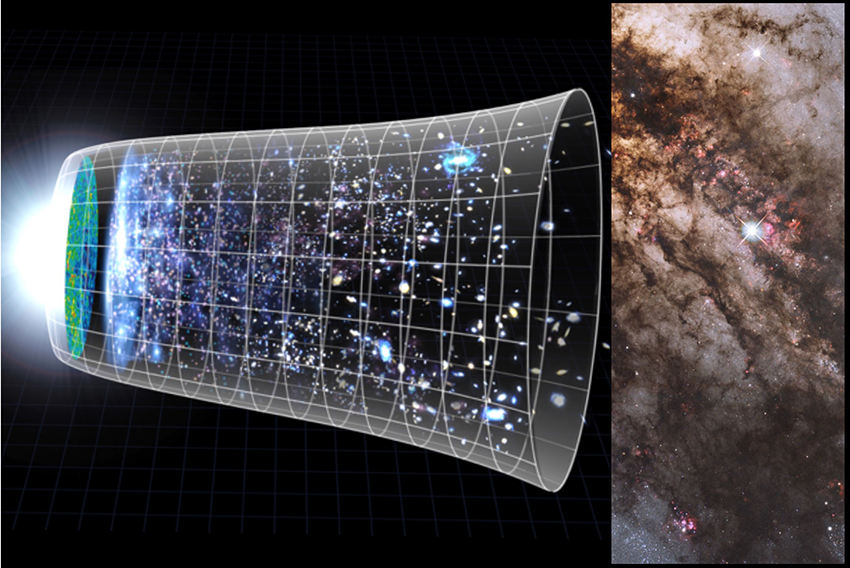
Research in Astrophysics, Cosmology and Gravitation at LPENS is developing around large observatories that are revolutionizing our knowledge of the universe. We cite a few examples related to current research at LPENS from the primordial universe to galactic astrophysics.
– Observatories in Antarctica and Chile in the Atacama, as well as the LiteBIRD space project, are following up on the Planck space mission by mapping the cosmic microwave background to search for the expected signature of the primordial gravitational waves generated by the big bang.
– By observing the primordial distribution of hydrogen atoms, the Square Kilometer Array (SKA) will help determine how the Universe gradually illuminated as stars and galaxies formed and then evolved.
– The EUCLID space mission will make it possible to detect any deviation from general relativity and to study the nature of dark matter and dark energy through their observational signatures in the geometry of the universe.
The Atacama Large Millimeter Array (ALMA) in Chile and the IRAM interferometer in the Alps allow us to study the physics of matter – gas and dust in circumgalactic and interstellar space – and magnetic fields that lead to the formation of galaxies, stars and planets.
The Astrophysics, Cosmology and Gravitation Axis is composed of 2 teams:
— Astrophysics
— Cosmology and Gravitation
- The Astrophysics, Cosmology and Gravitation Axis seminar : see web page of seminar in SEMPARIS.
- The former members of the Astrophysics, Cosmology and Gravitation Axis (Alumni) [to be completed].
- Current or previous Ph.D. theses by students of the Astrophysics, Cosmology and Gravitation Axis [to be completed].









